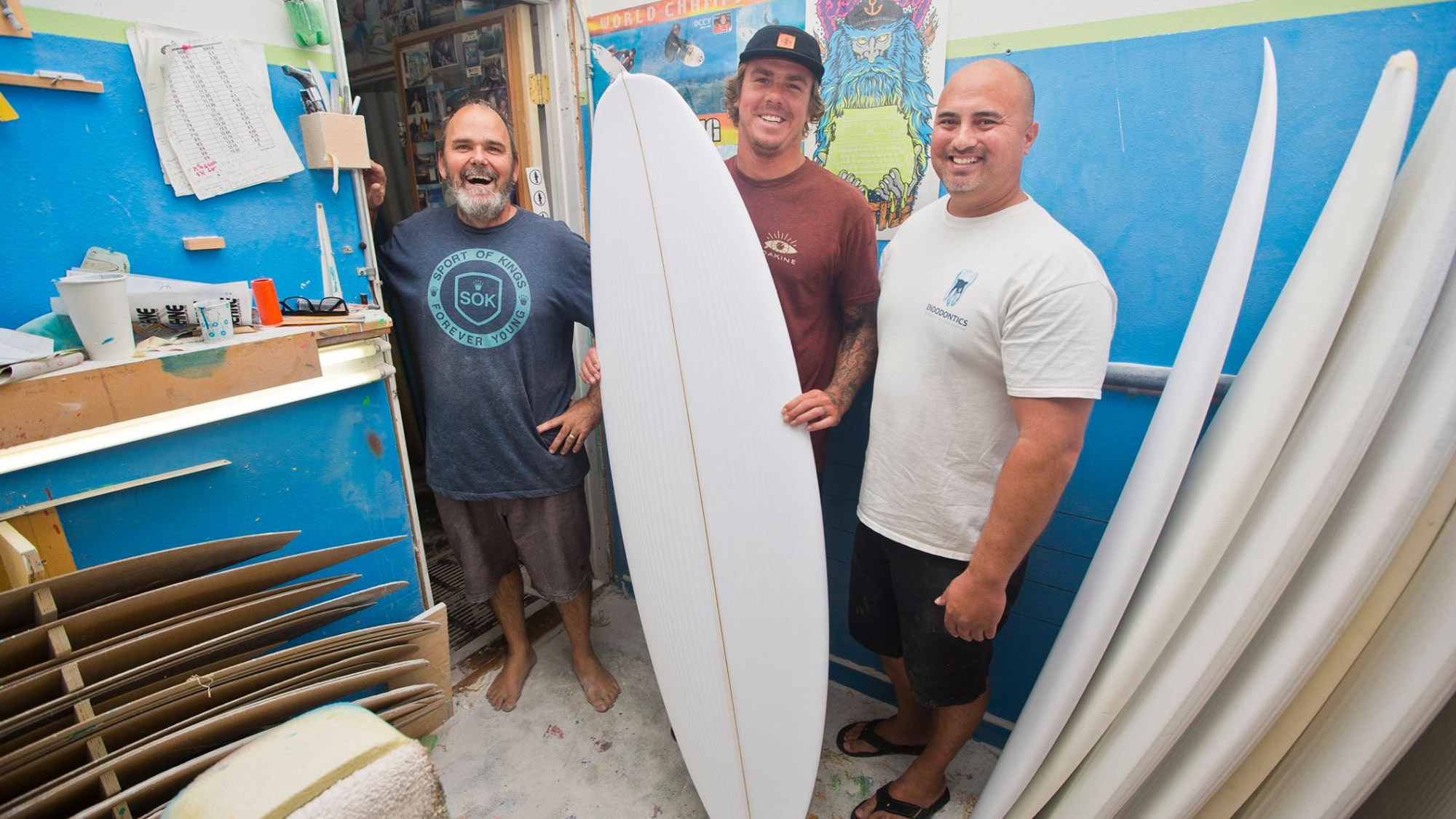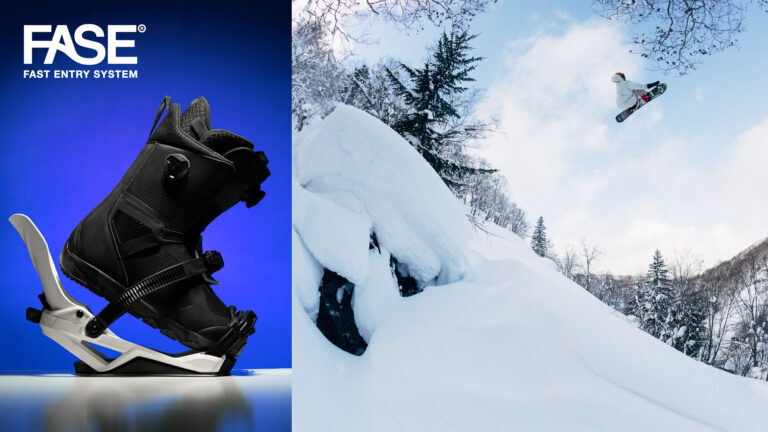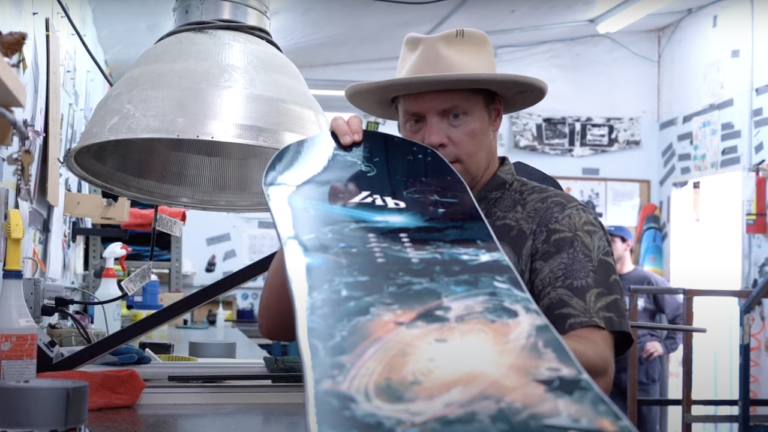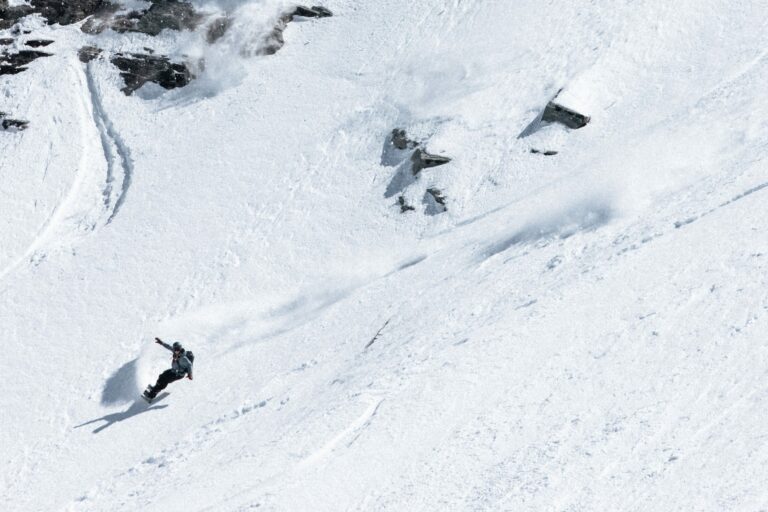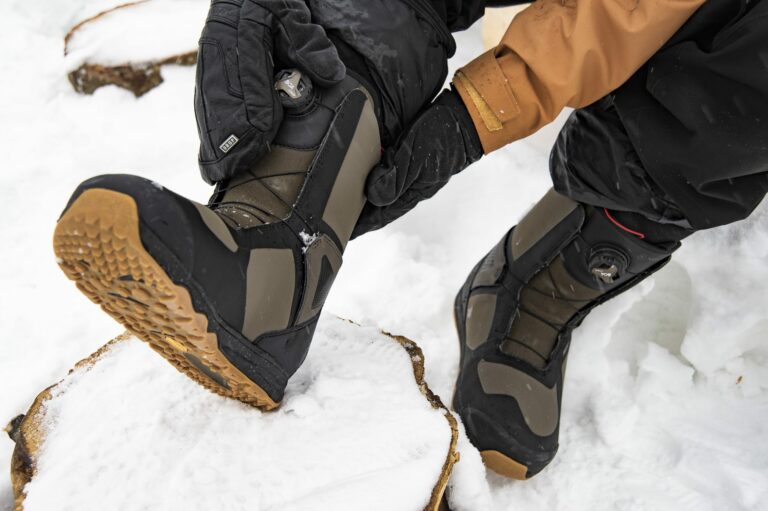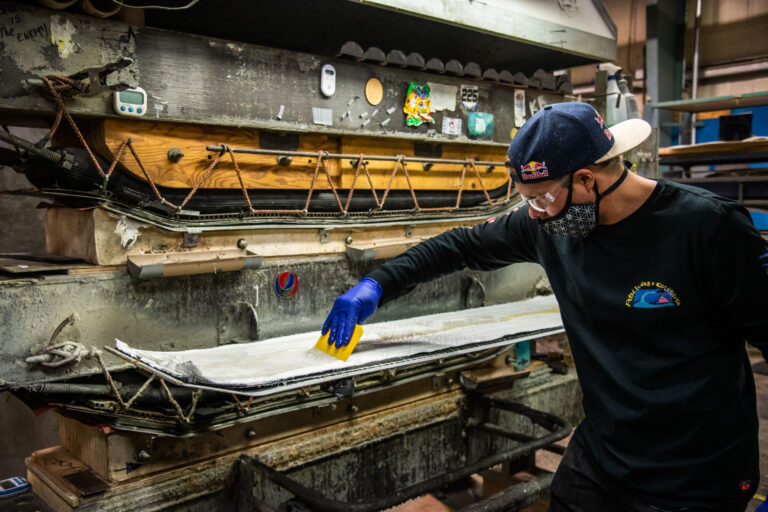Opening Photo: Jared Sislin
At this time of year, many snowboarders’ thoughts turn to the ocean, and the chance to swap powder faces for wave faces. You can see it in your Instagram feed, where friends that were previously sharing selfies from the chairlift are now grinning back at you from tropical climes (or at least, a windswept stretch of sand in North Devon). Meanwhile, the algorithm starts to throw up random clips of spitting barrels and beach yoga poses with greater frequency.
It was against this backdrop of the merging seasons that one particular surf clip crossed our radar a couple of weeks back.
“Albee’s tricks will look familiar to any snowboarder with an occasional interest in halfpipe”
Albee Layer is a 27-year-old wave rider from the Hawaiian island of Maui, known for mixing balls-to-the-wall paddle-ins at spots like Jaws with one of the most progressive aerial games in the sport.
For the past few years he’s been pushing the boundaries of above-the-lip acrobatics, throwing down tricks that the surfing world often struggles to name (‘double spin’ and ‘double oop’ are two of its more amusing attempts) but which will look familiar to any snowboarder with an occasional interest in halfpipe.
Albee’s latest video sees him perform possibly the best such maneuver yet. It’s basically a backside alley-oop 540:
Apart from the trick’s clear roots in pipe, we were struck by the unusual board he used. With its short, rounded nose and mirror-image tail it was strangely reminiscent of a classic twin tip snowboard – albeit without the sidecut.
Now, the idea of action sports ‘cross-pollinating’ is not a new one, but usually it’s us snowboarders (as relative newcomers) that borrow tricks, terminology and even design ideas from the worlds of skate and surf. Quite aside from Tom Sims and the whole birth of freestyle back in the 80s, modern rail riders appear to be on a mission to bite the style of their four-wheeled brethren, while the recent trend in the freeride market – towards directional powder shapes with an obvious surf lineage – is well documented.
“I don’t think doing shove-its and kickflips are the future of surfing, but I think double corks are”
Evidence of the pendulum swinging the other way, then, is interesting – and it comes hot on the heels of snowboard manufacturer Lib Tech making strides in the surf market with their own range of so-called ‘waterboards’.
We tracked down Albee and his shaper Dan Boehne of Infinity Surfboards to dig a little deeper. The pair have been working together for several years, with Boehne attempting to create shorter boards that facilitate trick progression whilst maintaining enough volume for Albee’s considerable frame – he is 6’2 and 200 pounds (14 stone).
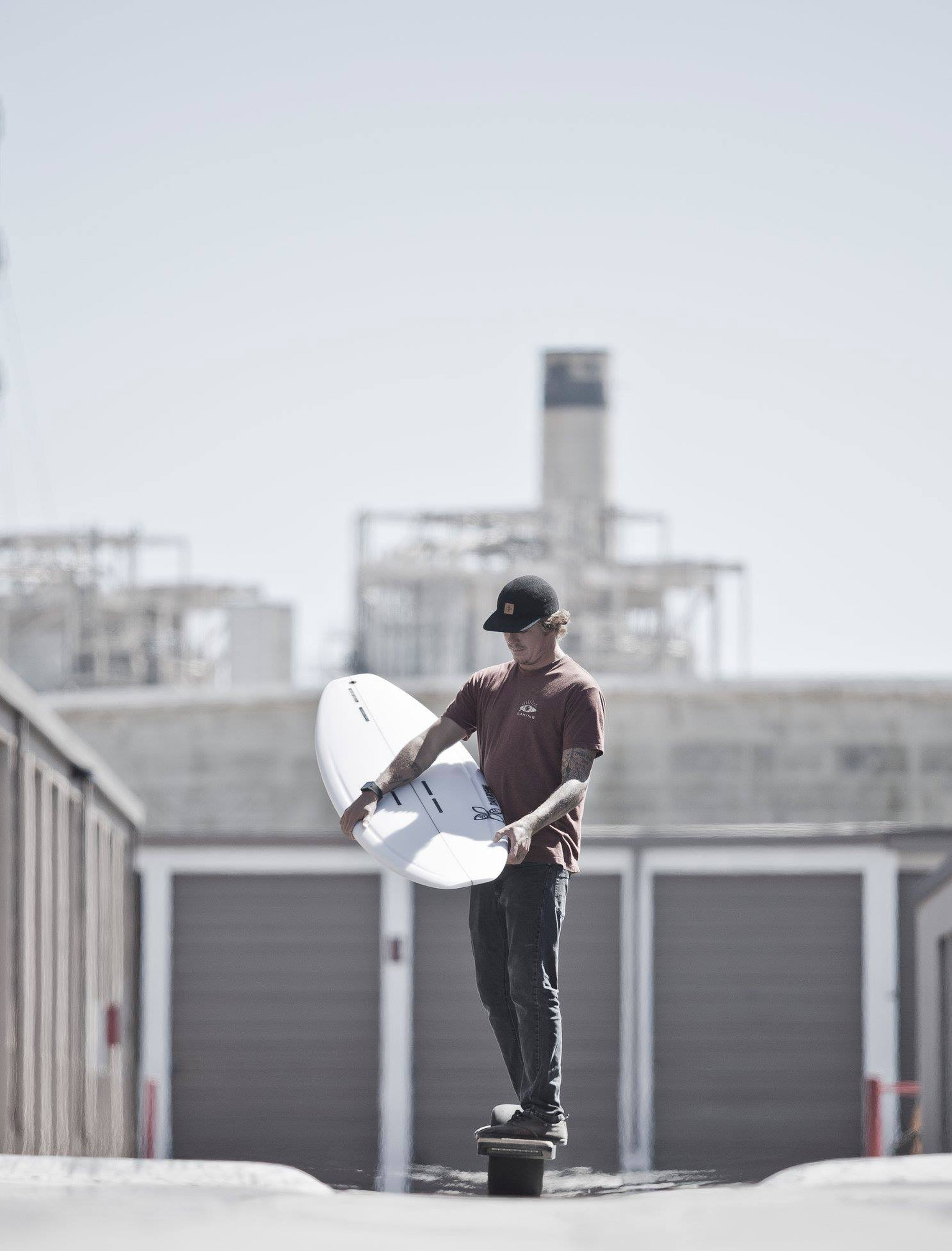
“I know Albee is inspired by snowboarding,” says Boehne. “He actually called me during the Winter Olympics with this idea of cutting the nose off and adding foot straps to a board. We sat down at the computer and drew it out. We have one version where the nose of his board is simply cut off and the corners are rounded out, and another with the nose outline a mirror of the tail.”
This second board became known as the I-69 – so-named because the interstate is the same on both sides – and it is the one he is surfing in the 540 clip.
“Snowboarding is where I get 90 percent of my inspiration for new tricks,” confirms Albee. “I’m not that good at it, but I love watching, and it’s where I want to take surfing. I don’t think doing shove-its and kickflips are the future of surfing, but I think double corks are, and I want to help get the sport there. I’m friends with Zak Hale and Sage Kotsenburg so I ask them for advice on what to try a lot.”
“Surfboard material research and development is experiencing a renaissance”
For his part, Boehne claims not to be aware of the current generation of snowboarders poaching surf phrases like ‘low tide’, getting ‘pitted’ or ‘pumping’ conditions; nor has he noticed as snowboard companies churn out swallow tails and ‘fish’ shapes in greater numbers than ever. But he is well aware of Lib Tech’s arrival on the surf market, and he is all for it.
“I think it’s great. Material research and development is experiencing a renaissance. We [now] construct boards from a lot of different materials depending on the customer’s needs. For example, a key feature for Albee’s boards is that he needs them really light. With conventional polyurethane construction, these really light boards are pretty weak and don’t last long. We started making them with Varial construction and we can get them even lighter while making them about 30 percent stronger at the same time.”
Ah yes, polyurethane. For decades, the surf market relied on a network of artisan shapers taking fragile PU blanks and customising them before covering them in fibreglass; more recently there has been an explosion in factory-made, mass-market models made from more durable materials. Is this manufacturing approach – that is closer to the way snowboards are produced – the future?
“It’s already here,” replies Boehne. “Look at Firewire and Slater Designs. They pretty much took over the market with mass-produced boards. And they’re good boards. After fighting it for years, we make some boards this way too, mostly with our SUP line. The main downside is that you can’t completely customise a board. Most surfers are very specific about what they like, so I think there will always be a place for custom board builders, but the market is shrinking for sure.”
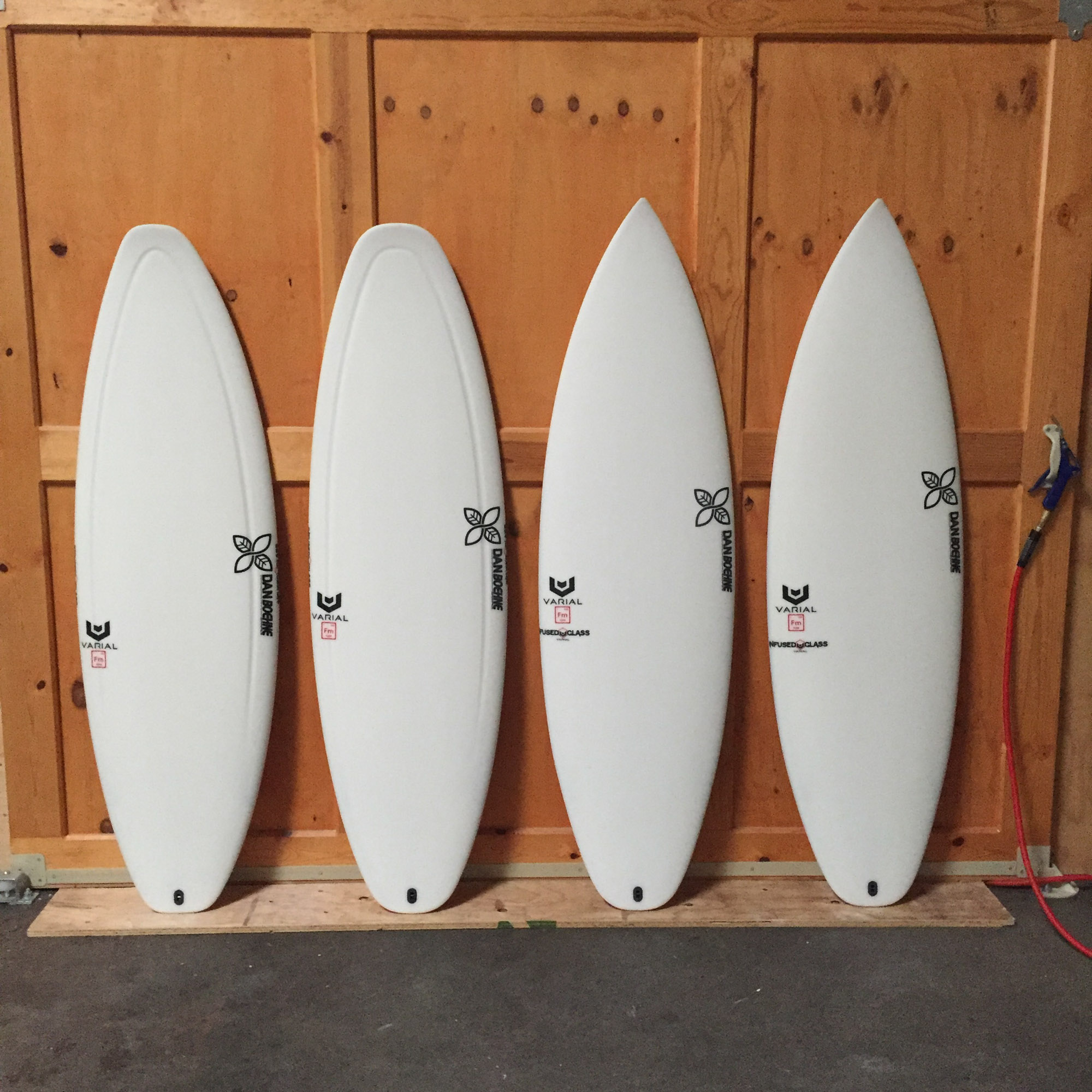
Along with the consistency and margins of mechanisation comes one more potential benefit: graphics. Where snowboards have featured a rich variety of artwork over the years, the traditional surf shaping process (and, arguably, a conservative aesthetic within the scene) has prevented an equivalent level of visual diversity in the final product. But that too is changing:
“Individual artists were painting most of the graphics,” explains Boehne. “This gets time consuming and expensive. Technology has changed that. Now we have a company called Boardlams print anything we want right onto the fiberglass, and it’s pretty affordable. Last year we made a quiver of boards for Albee where the colour was printed close-up photos of people’s eyeballs.”
“The future of surfing might just be looking a lot more like snowboarding”
Whatever the advances in equipment, however, surfing’s aerial progression has continued to be held back (in comparison to snowboarding) for a couple of more stubborn reasons. Chief amongst these, claims Albee, is an unimaginative contest scene.
“Our current competition format doesn’t reward game changing tricks,” he explains. “None of the best guys have any incentive to learn anything new because they can get perfect scores for doing surfing they do everyday.”
It’s an argument we’ve heard many times in snowboarding too, of course, but notwithstanding politics there is one undeniable hurdle surfers face that snowboarders don’t, and that is the fickle nature of the ocean. Just getting on the right wave, with the right wind and underwater geography helping to create a suitable launchpad, has been a game of infinite patience for Albee and his peers. Compare that to a perfectly shaped park kicker with a drag lift on tap and you can begin to see the scale of the challenge. As Albee puts it, “a lack of repetition has held us back for years.”
Even here, though, a revolution is on the cards. Kelly Slater’s Surf Ranch, which opened to a select crew of visitors amidst a veil of secrecy, appears to have achieved surfing alchemy: a man-made, mechanical, barrelling wave that is mouthwatering in its perfection. Shaun White and Travis White are amongst the lucky few to have scored golden tickets so far, while the latest rumour is that Kelly and his team are tinkering with the set-up to create the perfect stage for aerial progression. In fact Albee himself was flown in to advise.
The future of surfing, then, might just be looking a lot more like snowboarding. And there is one more twist.
“I think Albee is working with Dakine to make some footstraps that you can paddle on,” says Boehne. “He hasn’t released any clips yet – those double rotations are unstrapped.”
When he does, we’ll be sure to tune in.

